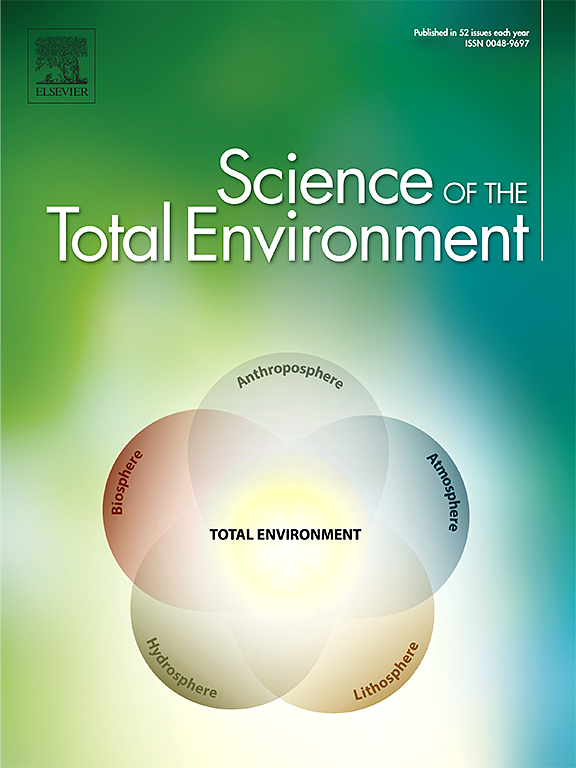Molecular response of earthworm, Eisenia fetida to Oxybenzone (Benzophenone-3) exposure
IF 8.2
1区 环境科学与生态学
Q1 ENVIRONMENTAL SCIENCES
引用次数: 0
Abstract
Benzophenone-type ultraviolet filters recently received significant attention to overlook regulatory agencies' safety potential due to their toxicological implications on humans and the environment. The present study has been carried out to explore the toxicity of Benzophenone-3 (BP-3) in earthworm Eisenia fetida. Low-level long-term exposure defiles earthworm health through elevated ROS and its detrimental impact on reproductive organs and reproduction. Based on KEGG and GO analysis, global transcriptomics reveals differentially expressed gene transcripts affecting key signaling pathways. Further validation by q-PCR showed significant upregulated expression of genes involved in stress (CuZn-SOD, CAT), metabolism (GST), reproduction and gametogenesis (ANN and Piwi-2), and endocrine (EcR) functions. Interestingly, lower concentrations of BP-3 are biologically effective in exhibiting a non-linear concentration-response pattern towards the expression of reproduction and endocrine function genes. In addition, BP-3, through soil exposure, significantly alters the gut microbiome by inducing changes in bacterial diversity, while fungal diversity remains unaffected. Proteobacteria, Firmicutes, Actinobacteria, and Bacteroidetes have significantly affected phyla, whereas Ascomycota and Basidiomycota remain dominant, suggesting their potential role in metabolizing or tolerating the BP-3 contamination. The findings highlight the molecular consequences of BP-3 exposure in earthworms and indicate the broader environmental impacts of benzophenone-type organic UV filters on terrestrial biota. The information could also be helpful for chemical risk assessment in soil ecotoxicology.

求助全文
约1分钟内获得全文
求助全文
来源期刊

Science of the Total Environment
环境科学-环境科学
CiteScore
17.60
自引率
10.20%
发文量
8726
审稿时长
2.4 months
期刊介绍:
The Science of the Total Environment is an international journal dedicated to scientific research on the environment and its interaction with humanity. It covers a wide range of disciplines and seeks to publish innovative, hypothesis-driven, and impactful research that explores the entire environment, including the atmosphere, lithosphere, hydrosphere, biosphere, and anthroposphere.
The journal's updated Aims & Scope emphasizes the importance of interdisciplinary environmental research with broad impact. Priority is given to studies that advance fundamental understanding and explore the interconnectedness of multiple environmental spheres. Field studies are preferred, while laboratory experiments must demonstrate significant methodological advancements or mechanistic insights with direct relevance to the environment.
 求助内容:
求助内容: 应助结果提醒方式:
应助结果提醒方式:


